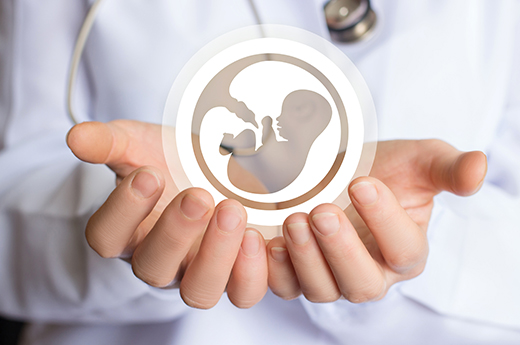The number of patients surviving cancer has increased in the recent years and it’s known that cancer treatment affects the male and female reproductive systems. The advances and improvements in the field of oncofertility has given a chance for women undergoing cancer treatment to preserve their fertility. The 3 main options for women opting for fertility preservation are:
- Ovarian tissue extraction followed by cryopreserving the tissue: Involves in the surgical excision of the cortical ovarian tissues through laparotomy or laparoscopy, and just before starting the cancer treatment. The tissue can be frozen via slow freezing or vitrification. In future, the frozen-thawed ovarian tissue can either be transplanted orthotopically or heterotopically. It may take up to 2-9 months for the ovary to function and may last for around 7 years. The second possibility is the in vitro culture of the tissue in order to produce mature oocytes, and freeze them before or after fertilization. This technique is still considered experimental as it’s a multistep in vitro procedure and has not resulted in competent mature oocytes that can be used for fertilization.
- Ovarian stimulation followed by oocyte or embryo cryopreservation: Involves in stimulating the ovaries to retrieve multiple mature oocytes. Post retrieval, the oocytes can either be frozen via vitrification until further use or can be fertilized with partner or donor sperm and then be frozen. Oocyte freezing is considered for prepubertal girls or single women refuse sperm donation.
- Ovarian-protection techniques: Involves in the surgical and non-surgical procedures done before or during the cancer treatment to protect the ovaries from the gonadotoxic effects of the treatment. Surgical protection techniques include oophoropexy away from the field of pelvic irradiation which is carried out through laparoscopy, laparotomy or robotic surgery. And, the non-surgical methods include pelvic shielding during radiotherapy, administration of GnRH analogs before and during chemotherapy and fractionation of the radio- and chemo-therapy doses.
Married men undergoing cancer treatment can opt for an IUI or an IVF cycle followed by embryo freezing. And for single men, semen freezing is the safest and the most effective method. Surgical sperm extraction techniques like TESE/PESA can be used for azoospermic men prior to their treatment. The sperm retrieved by these methods will then be frozen.
Over a few years it has been observed that the incidence of cancer has drastically increased in young boys. The two main options to preserve their fertility is by
- In vivo spermatogonial stem cell protection: Shielding the testes by limiting the radiation exposure or by moving them away from the field of radiation during the treatment.
- Immature gamete freezing: Involves in cryopreserving the testicular tissues in the form of either cell suspensions, tissues or the whole testis. However, this is method is still in the experimental stage and is given as an option in the hope that the technologies will improve in future and will help in utilizing the frozen tissue in a safe way.
At IVF Access, the patients are counseled regarding the pros and cons of each procedure are given the best option that is suitable to their condition.


Leave a Reply